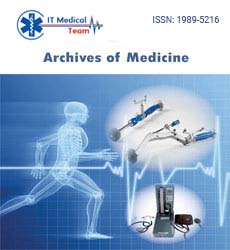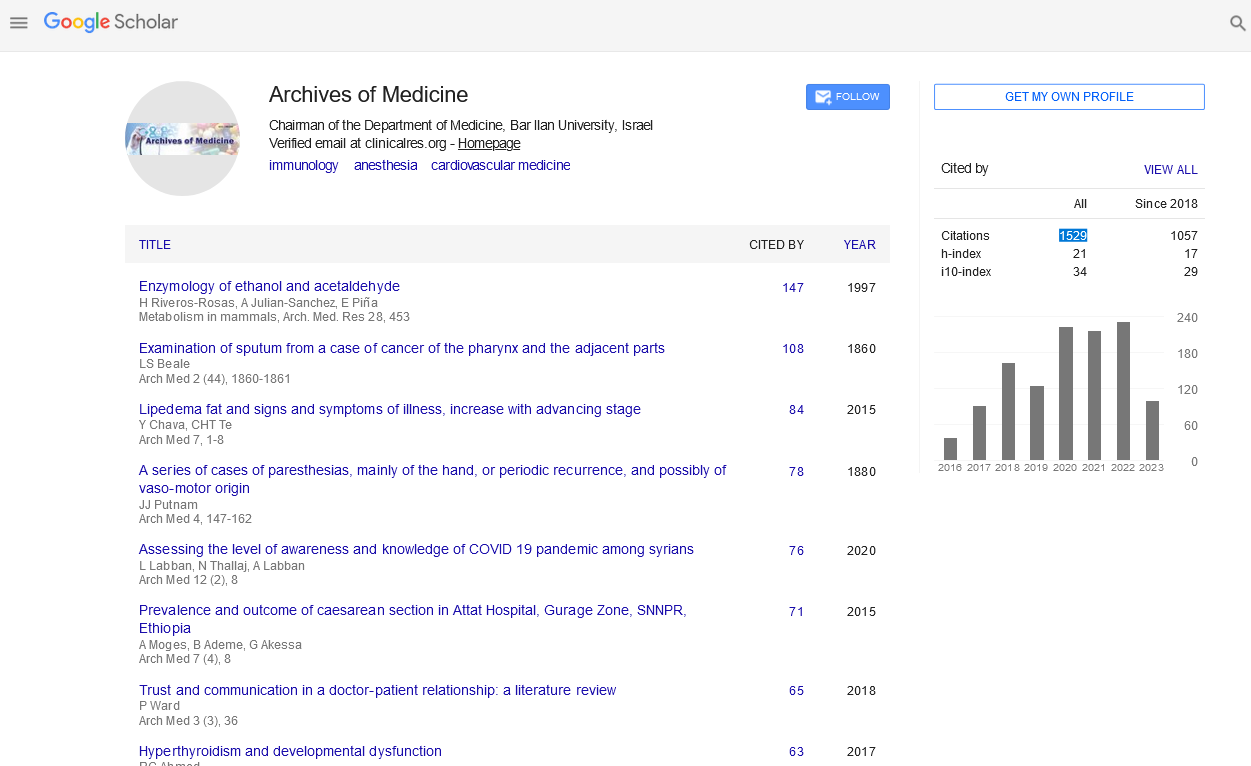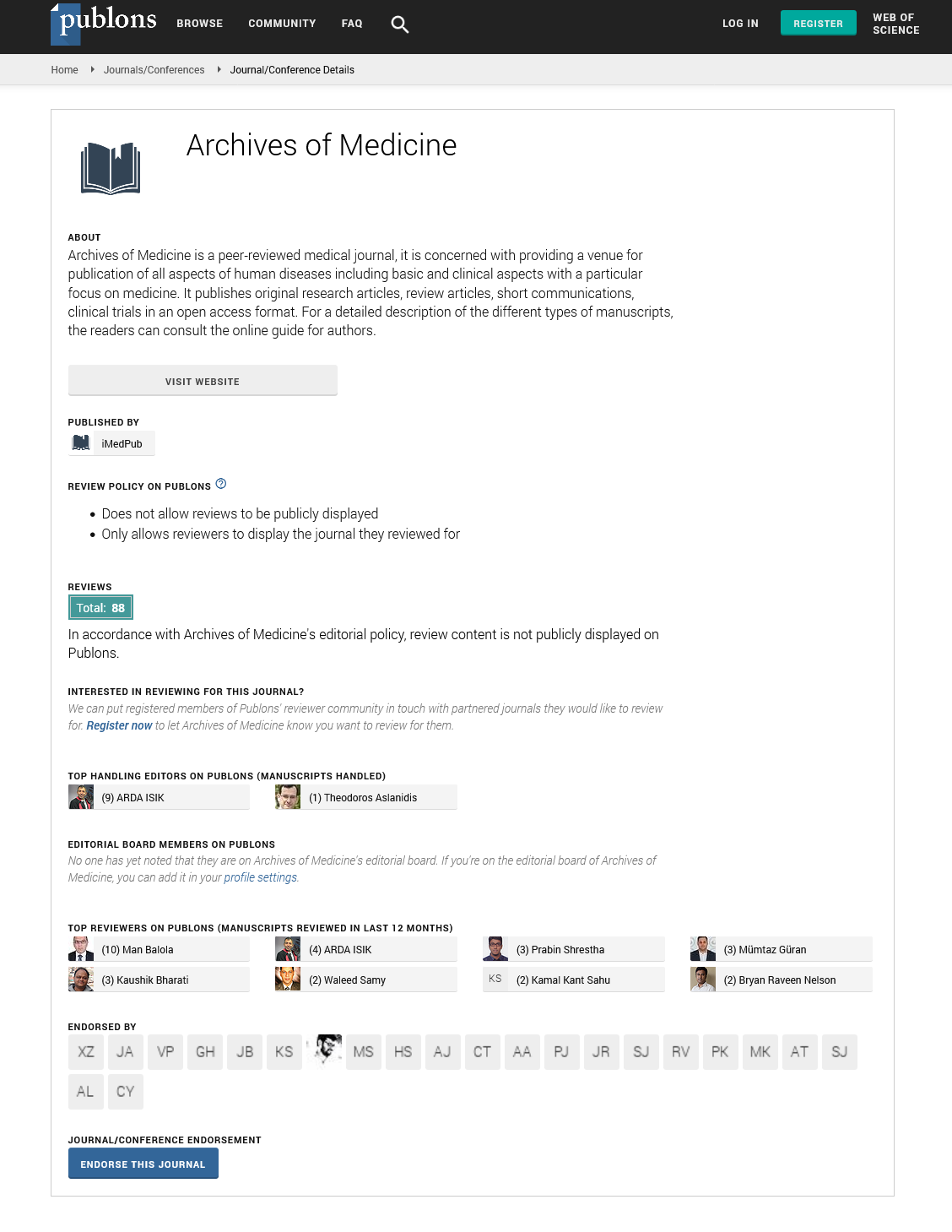Commentary - (2024) Volume 16, Issue 5
Infectious diseases: Understanding their impact and strategies for prevention
Olivia Harper* and
Liam Turner
Department of Infectious Diseases, University of Sydney, Sydney, Australia
*Correspondence:
Olivia Harper, Department of Infectious Diseases, University of Sydney, Sydney,
Australia,
Email:
Received: 19-Aug-2024, Manuscript No. ipaom-24-15398;
Editor assigned: 21-Aug-2024, Pre QC No. P-15398;
Reviewed: 02-Sep-2024, QC No. Q-15398;
Revised: 09-Sep-2024, Manuscript No. R-15398;
Published:
16-Sep-2024
Introduction
Infectious diseases have shaped human history, influencing societies and economies throughout the ages. From the devastating outbreaks of the bubonic plague to the more recent challenges posed by HIV/AIDS, Ebola, and COVID-19, infectious diseases remain a significant public health concern worldwide. The impact of these diseases extends beyond health alone; they can disrupt economies, strain healthcare systems, and alter social structures. As our world becomes increasingly interconnected through globalization and urbanization, the threat of infectious diseases is more pronounced than ever, making it crucial to understand their dynamics and implement effective prevention strategies [1]. Their ability to spread rapidly and impact diverse populations makes understanding these diseases crucial for global health security. In an era of increasing global interconnectedness, the threat of infectious diseases is more pronounced than ever, emphasizing the need for effective prevention strategies. This article explores the impact of infectious diseases on health and society, delving into their transmission mechanisms, effects on populations, and the multifaceted approaches necessary for prevention and control.
The rise of antimicrobial resistance adds another layer of complexity to the challenge of infectious diseases. As pathogens evolve and become resistant to existing treatments, common infections can turn into life-threatening conditions, complicating healthcare responses and leading to increased morbidity and mortality. Additionally, environmental factors such as climate change are altering the distribution of infectious diseases, introducing new pathogens into regions previously unaffected and expanding the range of diseases transmitted by vectors like mosquitoes and ticks [2].
Description
Infectious diseases are caused by pathogens such as bacteria, viruses, fungi, and parasites, which can be transmitted through various means, including direct contact, airborne transmission, and vectors like mosquitoes. The impact of these diseases is profound, leading to morbidity and mortality, economic burden, and strain on healthcare systems. Outbreaks can disrupt communities, overwhelm medical facilities, and necessitate extensive public health responses. For example, the COVID-19 pandemic highlighted the vulnerabilities in global health systems and underscored the importance of timely and coordinated responses to infectious threats. Preventing the spread of infectious diseases requires a comprehensive approach that includes vaccination, surveillance, public education, and hygiene practices. Vaccination has proven to be one of the most effective strategies for controlling infectious diseases, reducing the incidence of illnesses like measles, polio, and influenza. Surveillance systems play a crucial role in identifying outbreaks early, allowing for rapid intervention and containment measures [3]. Public education campaigns that promote hand hygiene, safe food practices, and awareness of transmission routes are also essential in empowering communities to take proactive measures against infections.
In addition to traditional prevention strategies, advancements in technology and research are paving the way for innovative approaches to combat infectious diseases. The development of rapid diagnostic tests, antiviral therapies, and antimicrobial resistance management strategies are critical in addressing the evolving challenges posed by pathogens. Furthermore, interdisciplinary collaboration among healthcare providers, researchers, and policymakers is vital to formulating effective responses to emerging infectious threats. Understanding the transmission mechanisms, risk factors, and effects of infectious diseases on various populations is essential for formulating effective public health policies [4]. Vulnerable groups, such as the elderly, immunocompromised individuals, and those living in low-resource settings, face heightened risks and require targeted interventions. The psychological impact of infectious diseases also cannot be overlooked, as fear of outbreaks can lead to stigma, mental health issues, and social unrest.
This article explores the impact of infectious diseases on health and society, delving into their transmission mechanisms, effects on populations, and the multifaceted approaches necessary for prevention and control. By examining these factors, we aim to provide a comprehensive understanding of infectious diseases and highlight the importance of global cooperation in addressing this ongoing challenge. Through increased awareness and proactive measures, we can better prepare for and respond to infectious threats, ultimately safeguarding public health for generations to come [5].
Conclusion
Infectious diseases pose a significant challenge to global health, with far-reaching impacts on individuals, communities, and economies. Understanding their dynamics and effects is essential for developing effective prevention strategies that can mitigate their impact. By leveraging vaccination, surveillance, public education, and technological innovations, we can enhance our ability to combat infectious diseases and protect public health. As the world becomes more interconnected, a collaborative approach that emphasizes research, education, and rapid response will be crucial in safeguarding against future outbreaks. Ultimately, a proactive and informed stance toward infectious diseases can lead to healthier populations and more resilient healthcare systems, ensuring that we are better equipped to face the challenges of tomorrow.
Acknowledgment
None.
Conflict of Interest
None.
References
- Nguyen HX, Nguyen CN. Microneedle-mediated transdermal delivery of biopharmaceuticals. Pharmaceutics. 2023 13;15(1):277.
Google Scholar, Crossref, Indexed at
- Mansoor I, Eassa HA, Mohammed KH, et al. Microneedle-based vaccine delivery: Review of an emerging technology. AAPS Pharmscitech. 2022 5;23(4):103.
Google Scholar, Crossref, Indexed at
- Shah N, Ghosh A, Kumar K, et al. A review of safety and immunogenicity of a novel measles, mumps, rubella (MMR) vaccine. Hum Vaccines Immunother. 2024 31;20(1):2302685.
Google Scholar, Crossref, Indexed at
- Muralidharan P, Malapit M, Mallory E, et al. Inhalable nanoparticulate powders for respiratory delivery. Nanomedicine. 2015 1;11(5):1189-99.
Google Scholar, Crossref, Indexed at
- Stylianou E, Satti I. Inhaled aerosol viral-vectored vaccines against tuberculosis. Curr Opin Virol. 2024 1;66:101408.
Google Scholar, Crossref, Indexed at






